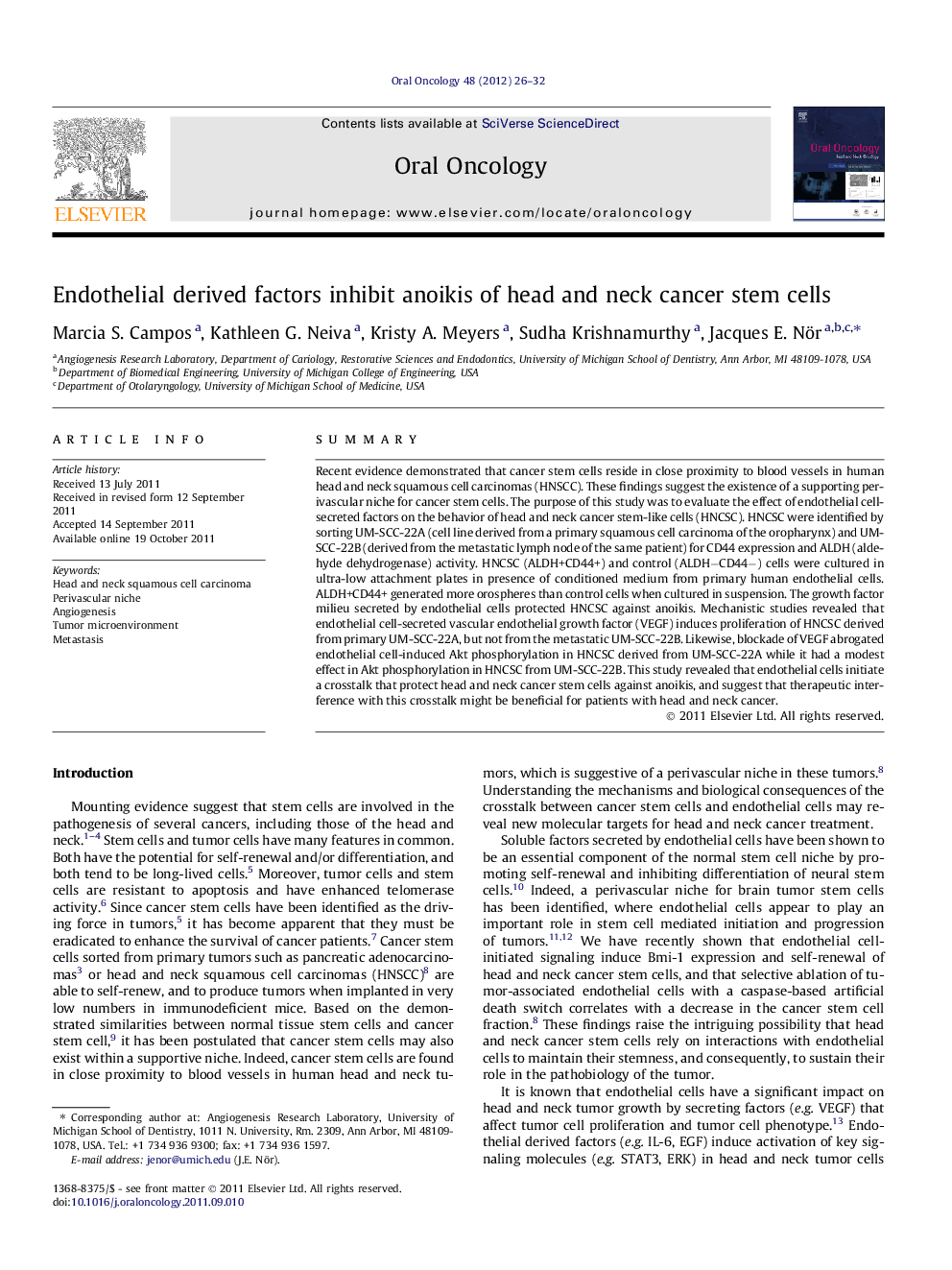| Article ID | Journal | Published Year | Pages | File Type |
|---|---|---|---|---|
| 3164338 | Oral Oncology | 2012 | 7 Pages |
SummaryRecent evidence demonstrated that cancer stem cells reside in close proximity to blood vessels in human head and neck squamous cell carcinomas (HNSCC). These findings suggest the existence of a supporting perivascular niche for cancer stem cells. The purpose of this study was to evaluate the effect of endothelial cell-secreted factors on the behavior of head and neck cancer stem-like cells (HNCSC). HNCSC were identified by sorting UM-SCC-22A (cell line derived from a primary squamous cell carcinoma of the oropharynx) and UM-SCC-22B (derived from the metastatic lymph node of the same patient) for CD44 expression and ALDH (aldehyde dehydrogenase) activity. HNCSC (ALDH+CD44+) and control (ALDH−CD44−) cells were cultured in ultra-low attachment plates in presence of conditioned medium from primary human endothelial cells. ALDH+CD44+ generated more orospheres than control cells when cultured in suspension. The growth factor milieu secreted by endothelial cells protected HNCSC against anoikis. Mechanistic studies revealed that endothelial cell-secreted vascular endothelial growth factor (VEGF) induces proliferation of HNCSC derived from primary UM-SCC-22A, but not from the metastatic UM-SCC-22B. Likewise, blockade of VEGF abrogated endothelial cell-induced Akt phosphorylation in HNCSC derived from UM-SCC-22A while it had a modest effect in Akt phosphorylation in HNCSC from UM-SCC-22B. This study revealed that endothelial cells initiate a crosstalk that protect head and neck cancer stem cells against anoikis, and suggest that therapeutic interference with this crosstalk might be beneficial for patients with head and neck cancer.
